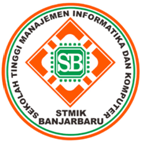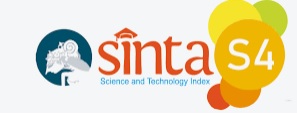Perbandingan Model Arsitektur CNN Dengan Metode Transfer Learning Untuk Klasifikasi Spesies Ikan Laut
Abstract
Fish are cold-blooded animals that are widely utilized by humans. Fish are a diverse group of poikilothermic vertebrates with over 27,000 species worldwide. The large number of fish species poses a challenge in distinguishing between them. This study aims to implement and compare three popular Convolutional Neural Network (CNN) architectures, namely Xception, Nasnet, and MobileNet V3L, in the task of classifying marine fish species. The research results show that all three CNN architectures perform exceptionally well in classifying marine fish species. The MobileNet V3L architecture achieves the highest level of accuracy with a value of 99% for all evaluation metrics. The Xception architecture achieves an overall accuracy of 97%, while the NasNet architecture achieves an overall accuracy of 92%. Overall, the comparison indicates that the MobileNet V3L architecture is the best architecture in this study.
Keyword: Convolutional Neural Network; Transfer Learning; Sea Fish Classification
Abstrak
Ikan merupan hewan berdarah dingin yang banyak di manfaatkan oleh manusia. Ikan adalah kelompok vertebrata poikilotermik yang beraneka ragam dengan jumlah spesies lebih dari 27.000 di seluruh dunia. Banyaknya jumlah spesies ikan menjadi satu masalah dalam membedekan jenis ikan. Penelitian inibertujuan untuk menerapkan dan membandingkan tiga arsitektur Convolutional Neural Network (CNN) yang populer, yaitu Xception, Nasnet, dan MobileNet V3L, dalam tugas klasifikasi spesies ikan laut. Hasil penelitian menunjukkan bahwa semua tiga arsitektur CNN memiliki performa yang sangat baik dalam klasifikasi spesies ikan laut. Arsitektur MobileNet V3L mencapai tingkat akurasi tertinggi dengan nilai sebesar 99% untuk semua metrik evaluasi. untuk arsitektur Xception menghasilkan akurasi keseluruhan 97% dan arsitektur NasNet menghasilkan akurasi keseluruhan 92%. Secara keseluruhan perbandingan dapat dikatakan bahwa arsitektur Mobilenet V3L adalah arsitektur terbaik dalam penelitian ini.
Kata kunci: Convolutional Neural Network; Transfer Learning; Klasifikasi Ikan Laut
References
A. I. Burhanuddin, Vertebrata Laut. Deepublish, 2018.
T. N. Utami and E. Indrayani, Komoditas Perikanan. Universitas Brawijaya Press, 2018.
N. Z. Munantri, H. Sofyan, and M. Y. Florestiyanto, “Aplikasi Pengolahan Citra Digital Untuk Identifikasi Umur Pohon,” Telemat. J. Inform. dan Teknol. Inf., vol. 16, no. 2, pp. 97–104, 2020.
M. L. Suyanto, “Tingkat Dasar dan Lanjut,” Inform. Bandung, 2018.
S. Pattanayak, J. S. Pattanayak, and S. John, Pro deep learning with tensorflow. Springer, 2017.
M. Pasaribu and A. Widjaja, Artificial Intelligence: Perspektif Manajemen Strategis. Kepustakaan Populer Gramedia, 2022.
S. Amat, I. M. Dadang, and B. Y. Mesra, “Klasifikasi jenis alat musik tradisional Papua menggunakan metode transfer learning dan data augmentasi,” J. Sist. Komput. dan Kecerdasan Buatan, vol. 5, no. 2, pp. 36–44, 2022.
N. Rachmat, Y. Yohannes, and A. Mahendra, “Klasifikasi Jenis Ikan Laut Menggunakan Metode SVM dengan Fitur HOG dan HSV,” JATISI (Jurnal Tek. Inform. dan Sist. Informasi), vol. 8, no. 4, pp. 2235–2247, 2021.
I. Ariawan, W. A. Arifin, A. A. Rosalia, and N. Tufailah, “Klasifikasi Tiga Genus Ikan Karang Menggunakan Convolution Neural Network,” J. Ilmu dan Teknol. Kelaut. Trop., vol. 14, no. 2, pp. 205–216, 2022.
A. B. Zuhri, D. I. Maulana, and E. S. Maheswara, “Optimation Image Classification Pada Ikan Hiu Dengan Metode Convolutional Neural Network Dan Data Augmentasi,” J. Tika, vol. 7, no. 1, pp. 1–11, 2022.
A. Bahar and B. A. Kusuma, “Klasifikasi Spesies Hiu Dengan Arsitektur,” J. Comput. Sci. Technol., vol. 1, no. 3, pp. 118–123, 2023.
R. Kalaiarasan, K. Madhan Kumar, S. Sridhar, and M. Yuvarai, “Deep Learning-based Transfer Learning for Classification of Skin Cancer,” Proc. - Int. Conf. Appl. Artif. Intell. Comput. ICAAIC 2022, pp. 450–454, 2022, doi: 10.1109/ICAAIC53929.2022.9792651.
C. Shorten and T. M. Khoshgoftaar, “A survey on image data augmentation for deep learning,” J. big data, vol. 6, no. 1, pp. 1–48, 2019.
A. Howard et al., “Searching for mobilenetv3,” in Proceedings of the IEEE/CVF international conference on computer vision, 2019, pp. 1314–1324.
B. Zoph, V. Vasudevan, J. Shlens, and Q. V Le, “Learning transferable architectures for scalable image recognition,” in Proceedings of the IEEE conference on computer vision and pattern recognition, 2018, pp. 8697–8710.
N. Jaymon, S. Nagdeote, A. Yadav, and R. Rodrigues, “Real time emotion detection using deep learning,” in 2021 International conference on advances in electrical, computing, communication and sustainable technologies (ICAECT), 2021, pp. 1–7.
N. Hardi, “Komparasi Algoritma MobileNet Dan Nasnet Mobile Pada Klasifikasi Penyakit Daun Teh,” Reputasi J. Rekayasa Perangkat Lunak, vol. 3, no. 1, pp. 50–55, 2022.
W. Bismi and H. Harafani, “Perbandingan Metode Deep Learning dalam Mengklasifikasi Citra Scan MRI Penyakit Otak Parkinson,” InComTech J. Telekomun. dan Komput., vol. 12, no. 3, pp. 177-185, 2022, doi: 10.22441/incomtech.v12i3.15068.
How To Cite This :
Refbacks
- There are currently no refbacks.










